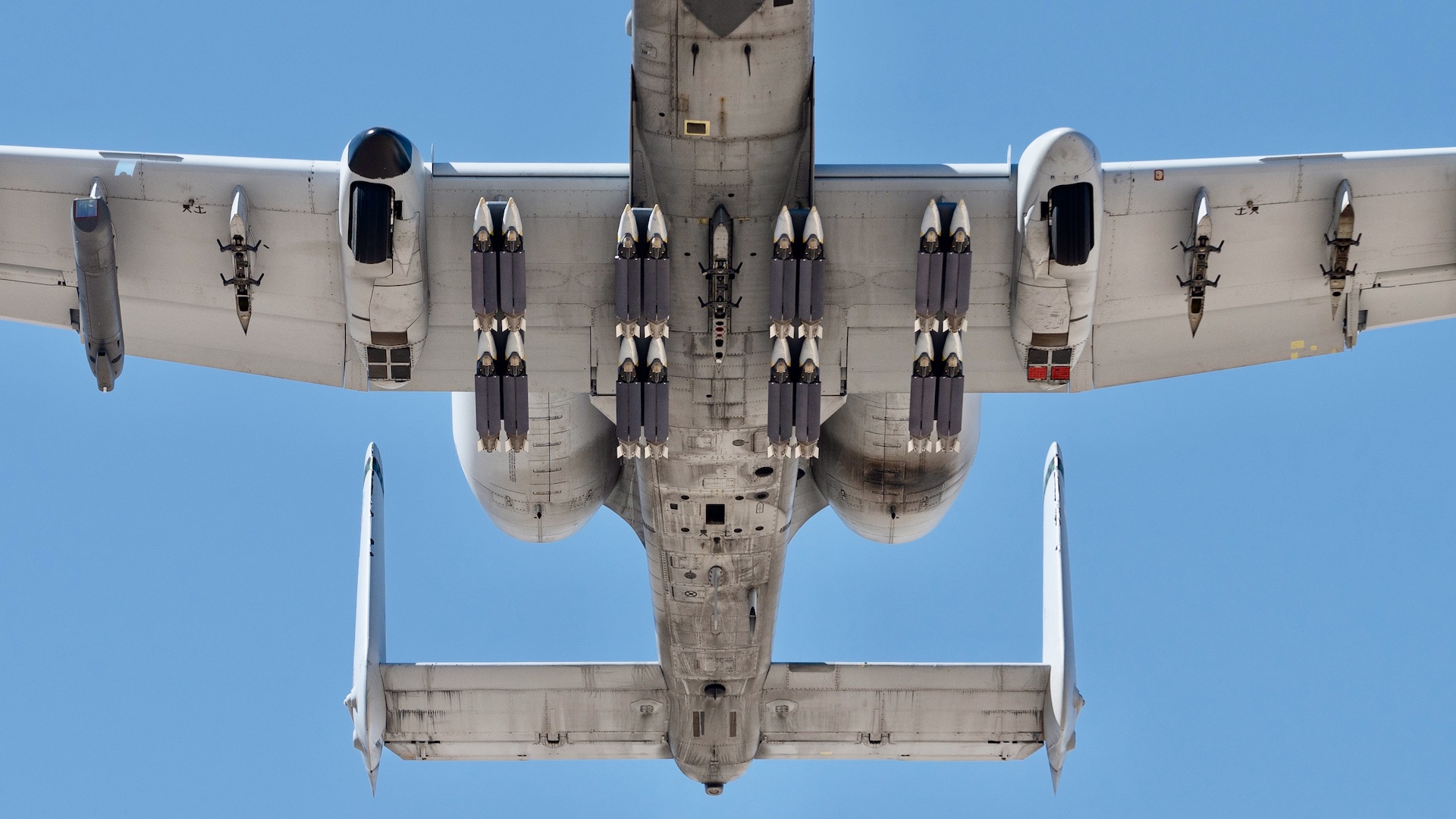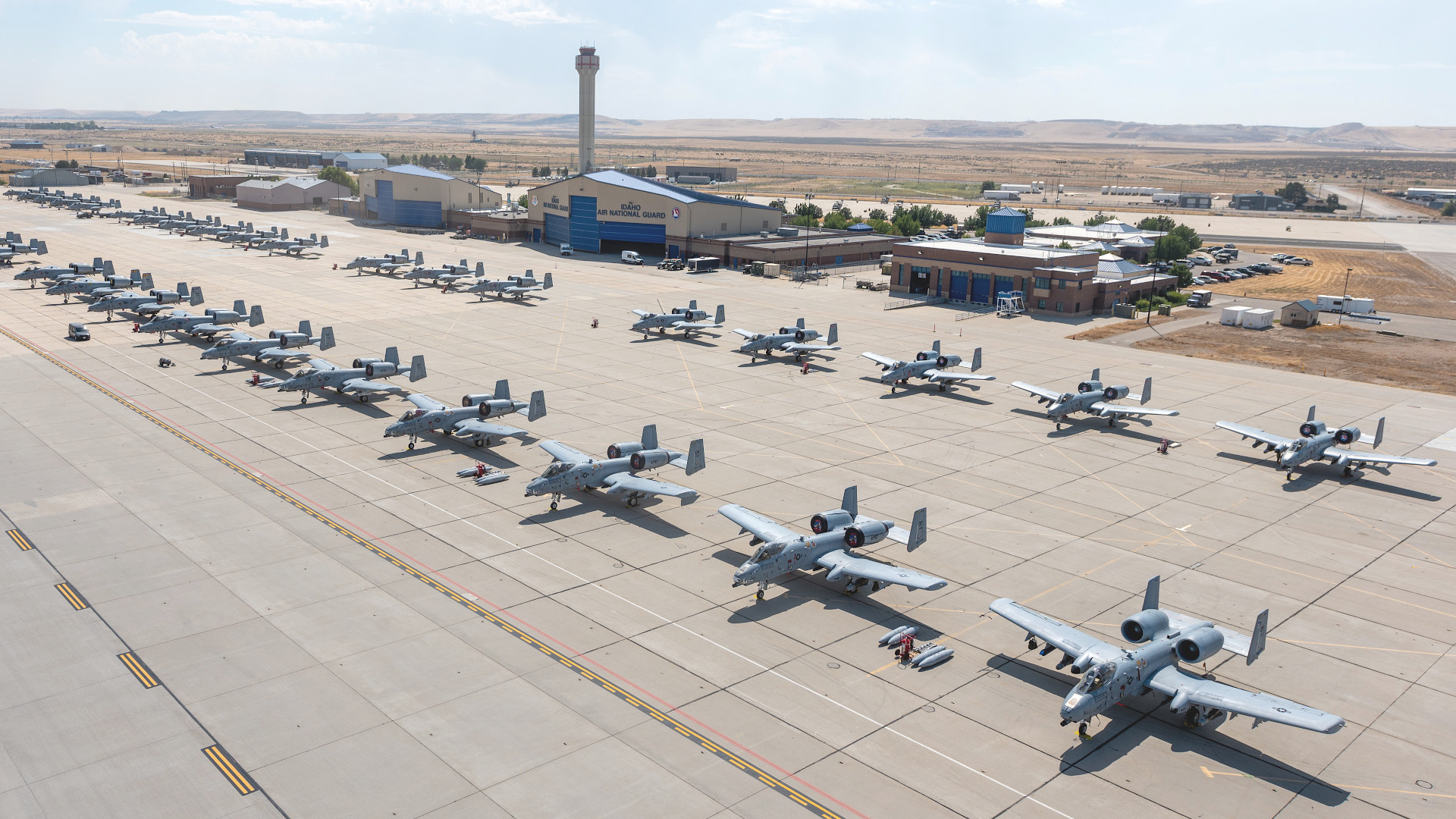The U.S. Air Force has announced formal plans to close out A-10 Warthog ground attack aircraft operations at two bases. F-35A Joint Strike Fighters will take the place of A-10s at one of those locations, while the other will see the arrival of F-16C/D Viper fighters. This is all in line with the service’s goal of divesting the last A-10s before the end of the decade, if not sooner, something Congress now seems inclined to acquiesce to after decades of blocking such divestments.
The Air Force issued two separate press releases about the expected changes at Moody Air Force Base in Georgia and Gowen Field Air National Guard Base in Idaho yesterday. Both of these bases are now set to begin receiving their new aircraft in the 2027 Fiscal year.

With regard to Moody, “two squadrons of F-35As are projected to begin arriving in FY27 [Fiscal Year 2027] and are anticipated to require an increase in approximately 500 personnel,” according to one of the releases. “The Department of the Air Force will now conduct an environmental impact analysis, which is expected to be completed in fall 2025.”
There are currently two A-10 squadrons at Moody, the 74th and 75th Fighter Squadrons. These are both assigned to the 23rd Wing’s 23rd Fighter Group, which carries the lineage and honors of the Flying Tigers of World War II fame. One of the Group’s Warthogs was just recently repainted in a special heritage scheme that honors the Flying Tigers and one of that unit’s pilots, ace Charles R. Bond Jr., in particular, as you can read more about here.

Moody is also home to the 76th Fighter Squadron, an associate unit that provides pilots to fly the 23rd Fighter Group’s A-10s, but which has no assigned aircraft of its own.
At Gowen Field, “the 124th Fighter Wing… is expected to transition to an F-16 Fighting Falcon mission,” the release regarding the planned changes at that base says. “F-16s are expected to begin arriving in spring 2027 after the completion of an environmental impact analysis, which is expected to be completed in spring 2025.”
Part of the Idaho Air National Guard, the 124th Fighter Wing has a single A-10 squadron, the 190th Fighter Squadron. Gowen Field has also been the host of the biennial Hawgsmoke event, a bombing, missile, and tactical gunnery competition for the entire A-10 community, which you can read more about here.

It should be noted that these plans may still be subject to change in various ways, especially as move through the environmental impact analysis process. Environmental impact here includes a wide variety of things, including any possible increases in noise pollution. The F-35 and F-16 are both louder than the A-10 in many contexts. Gowen Field, in particular, is in an urban area, co-located with Boise Airport in Idaho’s capital of the same name. In 2019, Idahoans notably sued the Air Force over its use of urban areas in the southwestern end of the state for training exercises that included aircraft flying overhead.
Beyond the changes coming to Moody and Gowen Field, following the release of its 2024 Fiscal Year budget proposal back in April, the Air Force also disclosed that it plans to stand up a new Air Force Special Operations Command (AFSOC) wing at Davis-Monthan Air Force Base in Arizona after A-10 operations there cease in the coming years. What is tentatively referred to now as the future 492nd Power Projection Wing is expected to have a mixture of special operations aircraft, including MC-130J Commando II tanker-transports and OA-1K Sky Warden light attack aircraft.
The Air Force’s press release about the changes coming to Moody says that the service has currently laid out plans to divest a total of 54 A-10s in the next few years. This includes the expected retirement of 42 Warthogs just in Fiscal Year 2024. The service will, of course, need Congress to sign off on this before it can proceed.
The Air Force already has approval to cut 21 A-10s in Fiscal Year 2023, which began on October 1, 2022, and ends on September 30 of this year. As of June 15, the Air Force had already sent eight A-10s to the boneyard at Davis-Monthan Air Force Base in Arizona as part of those divestments, according to data from the 309th Aerospace Maintenance and Regeneration Group, which manages that facility.
At the time of writing, the Air Force has around 273 A-10s still in service, spread across active-duty, Air Force Reserve, and Air National Guard squadrons. With the exception of the 25th Fighter Squadron assigned to the 51st Fighter Wing at Osan Air Base in South Korea, all of the remaining Warthog units are in the United States.

It’s also worth noting that the Air Force’s Warthog divestment process so far has involved shuffling A-10s among its remaining units and sending ones with very high flying time to the boneyard first. For instance, the 74th Fighter Squadron at Moody delivered a Warthog to the boneyard in April, but received another from Indiana Air National Guard’s 122nd Fighter Wing to take its place. The 122nd is already in the process of transitioning to the F-16C/D Viper.
The Air Force’s stated plan is to have the last A-10s out of service no later than 2030, but the service has made clear the Warthog’s career could come to an end sooner than that.
“I would say over the next five, six years we will actually probably be out of our A-10 inventory,” Gen. Charles Q. Brown, the chief of staff of the Air Force and who is now the nominee to become the next Chairman of the Joint Chiefs of Staff, had told reporters when asked about this at the Air & Space Forces Association’s annual Warfare Symposium in March.
Congress had for decades repeatedly blocked Air Force attempts to retire the A-10 or significantly trim back the Warthog fleet, but this has begun to change in recent years. Members of the House and Senate have already begun to back the service’s new divestment plans for the 2024 Fiscal Year.
The Air Force’s relationship with the Warthog since it first entered service in 1977 has been, at best, checkered. The service has been accused of deliberately hamstringing the aircraft in the past, including axing or scaling back important upgrades like new, life-extending wings. The service did reboot its re-winging efforts in 2019, though that appears to be on track to be curtailed again in the end.

More recently, the Air Force did finally agree to go ahead with a major modernization initiative for the A-10, which has notably included the integration of the GBU-39/B Small Diameter Bomb (SDB) and the ADM-160 Miniature Air Launched Decoy (MALD) on these aircraft. The Warthog community has also been working hard on exploring new ways that it might be able to contribute during future high-end combat operations, particularly in any potential conflict against China in the Pacific.

In the meantime, the Air Force is certainly still sending A-10s on operational deployments and to support major exercises overseas. In March, Warthogs from the 75th Fighter Squadron began a deployment at Al Dhafra Air Base in the United Arab Emirates. A-10s also took part in the massive NATO-led Air Defender 23 exercise in Europe, which wrapped up last week.
At the same time, especially with the newly announced plans to shutter A-10 operations at Moody and Gowen Field in the next four years, the Air Force does indeed seem to be moving ever faster toward retiring the iconic Warthog for good.
Contact the author: joe@thedrive.com
